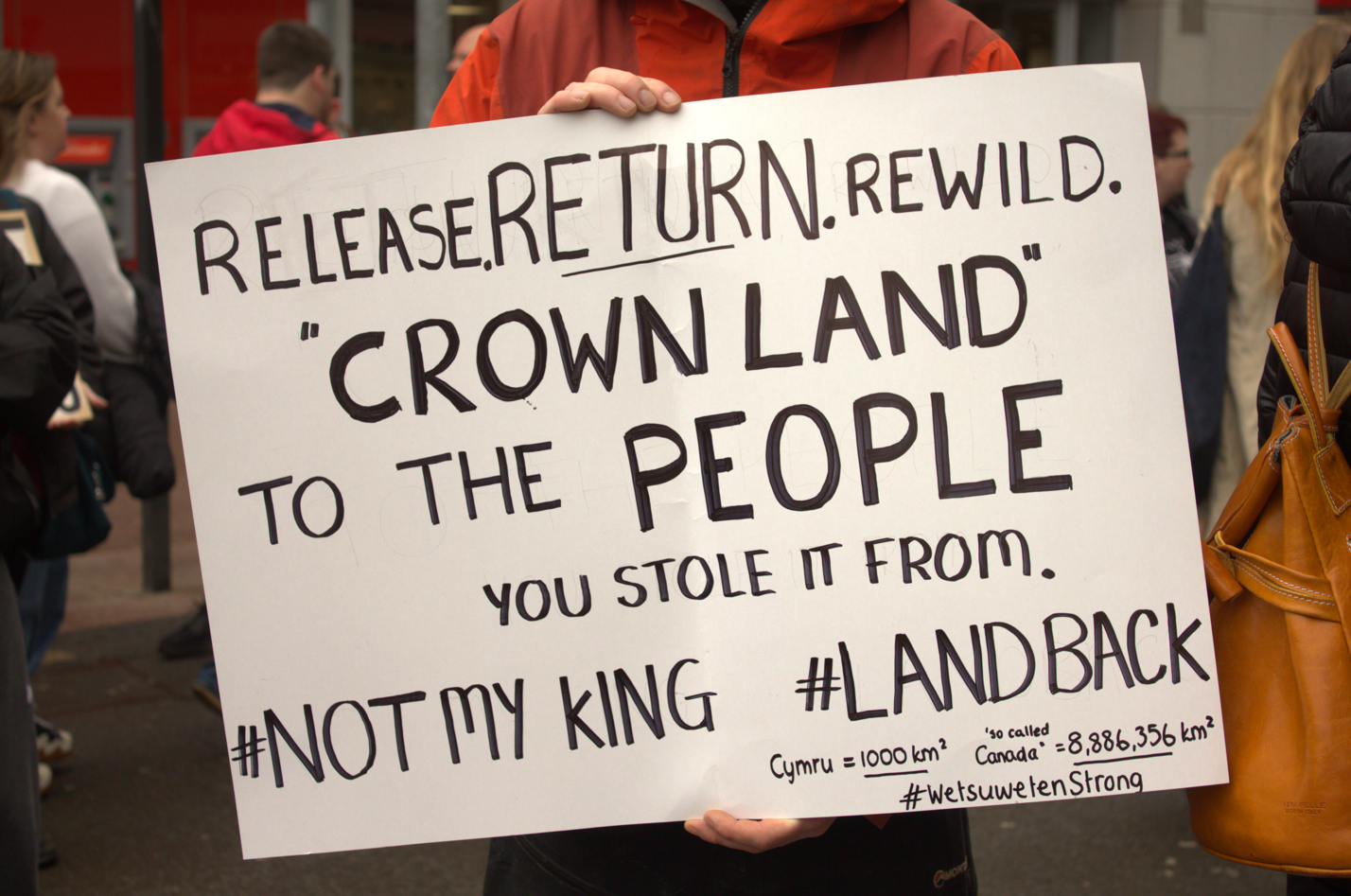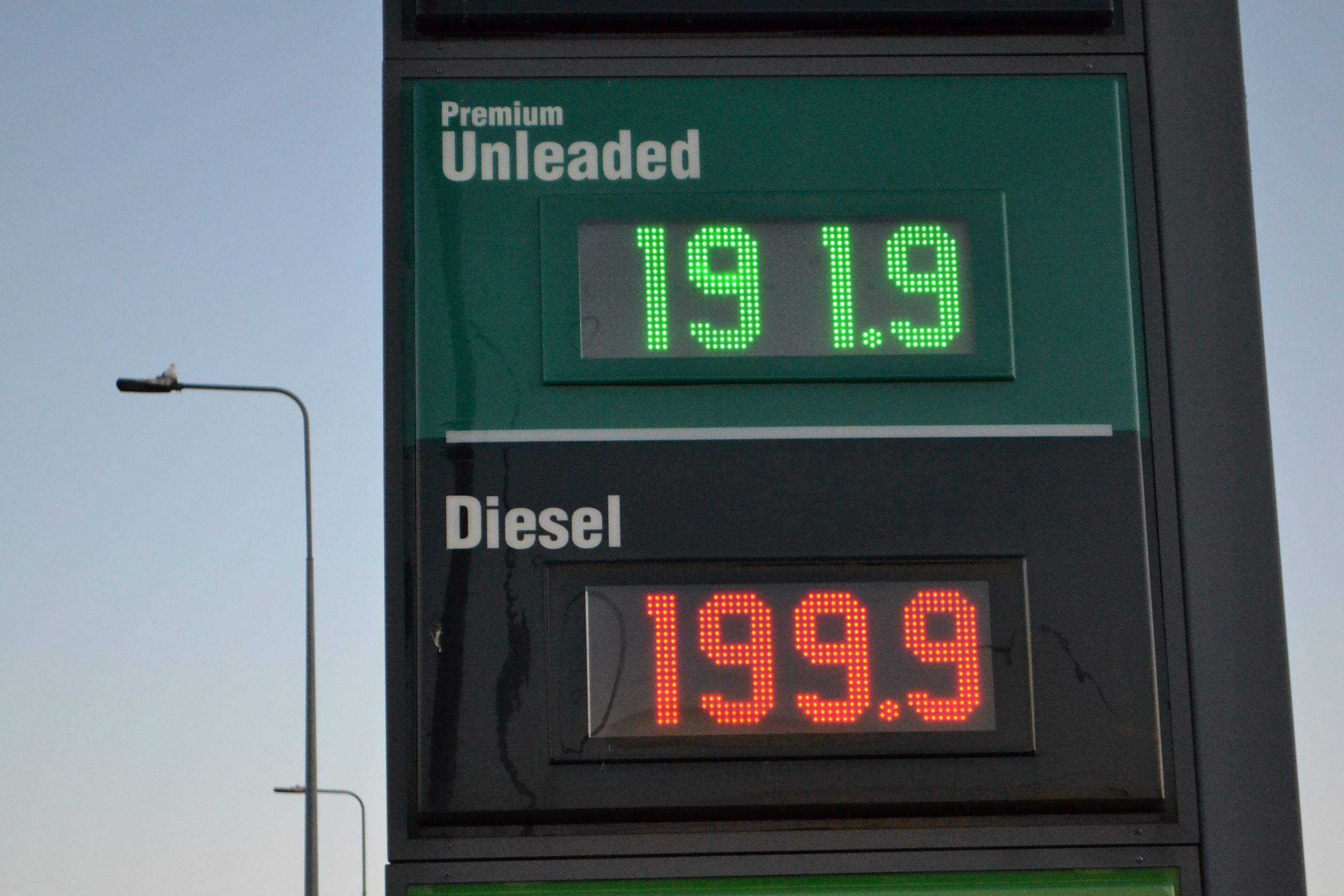
What Is The Crown Estate, And Why Are We Taking It Back?
Last September, hundreds protested the first official visit of King Charles III to Wales. And last month, people marched through Cardiff to protest his coronation. Now, Cymru Republic is calling a day of action across Wales this Saturday, 17 June, to coincide with Charles’ birthday and to take back the Crown Estate for the people. Adam Johannes, one of the group’s members, explains why.
By Adam Johannes, Cymru Republic. Cover image, protesters march against King Charles’ Coronation, by Ka Long Tung
All mainstream parties in Wales, except the Tories, now call for devolution of the Crown Estate in Wales to the Welsh Government. A recent opinion poll suggested that 75% of the Welsh public support this demand, but only people-power can make it happen.
Our hope is that tomorrow will just be the start and that in the future the Welsh radical left, trade union, environmental, independence and community groups can organise bigger protests to raise the demand that the entire Crown Estate be placed under democratic ownership of the people, so all can profit from our resources and have a voice in how they are managed and run.
How to join in
In Cardiff, we will gather on Saturday at 3 pm in the Stone Circle, Bute Park before symbolically taking back the River Taff from King Charles III and the Crown Estate. There is land all across Wales owned by the Crown Estate. You can find a list of locations here. Simply invite people to gather there with banners with slogans such as ‘This Land Is Our Land’ and send a photograph to [email protected] or tweet @CymruRepublic, email/tweet before hand if you are planning an action to be included in PR.
What is the Crown Estate
The Crown Estate describes itself on its website as an ‘independent commercial business’. It is a vast portfolio of land and property belonging solely to the reigning Monarch, but run by unelected Crown Estate Commissioners who are approved by the monarch on the advice of the Prime Minister.
The estate has a murky legal status. The Monarch is the legal owner, but they are not the Monarch’s private property and cannot be sold by the Monarch. Nor are they the property of the Government. The Crown Estate commissioners exercise “the powers of ownership” of the estate, although they are not “owners in their own right”. They are part of the hereditary possessions of the Sovereign “in right of the Crown”.
The majority of Crown Lands were won over centuries through theft and murder.
What does it include?
The Crown Estate includes central London properties, Ascot Racecourse, shopping centres, retail parks, offices farmland, parkland, forests, seabeds and over half of the UK’s foreshore. The Crown Estate owns the entire UK seabed out to 12 nautical miles, with the Crown estate having the right to collect royalties from wind and wave power. This property particularly has become extremely valuable with the development of offshore wind farms.
In Wales, the Crown Estate owns 65% of the Welsh foreshore and riverbed and over 50,000 acres of land. Between 2020 and 2021, the Crown Estate saw the value of its holdings in Wales increase from £96.8 million to £603 million.
How much is it worth?
The Crown Estate is one of the largest property managers in Europe administering land and property worth almost £16 billion with an annual revenue of over £300 million. The current value of the seabed rights is estimated at £5 billion, and six newly awarded licenses could generate up to £9 billion over the next ten years.
Where does the money go?
In England, Wales and Northern Ireland: All Crown Estate revenue goes to the UK Treasury who give 25% of it to billionaire King Charles III as ‘the sovereign grant’ that supposedly funds the King’s official duties.
How about Scotland?
The Scotland Act 2016 saw 40% of Crown Estate assets devolved with revenue now going to the Scottish Government rather than the UK Treasury.
The remaining 60% of assets were bound up in the Fort Kinnard retail park, which the Crown Estate had a multi-million stake in. Fort Kinnaird was not devolved, but sold off by Crown Estate Commissioners in 2018 to a global property giant with money from the sale used to buy a retail park in Cheltenham.
While now managed and run from Scotland, with revenue remaining in Scotland, the reigning monarch retains legal ownership of Crown Estate Scotland on the same basis as the rest of the Crown Estate in the UK.
What are the benefits of devolving the Crown Estate to Wales.
Devolution would mean that all the revenue and profits would be kept in Wales, with an elected Welsh Government overseeing how the Crown Estate is managed and run. In our opinion all revenue should be used to benefit our local communities, particularly those hit hardest by the climate and cost of living crisis, and the poorest and most marginalised communities. For example, new floating wind farms planned off the Welsh coast will generate huge profits, who should decide how and where those profits are spent? Unaccountable Crown Estate Commissioners? Or a public body accountable to a Welsh Government we democratically elect?
Why do socialist republicans also call for democratic public ownership?
Devolving the Crown Estate to the Welsh Government would mean that it would manage and run the estate and enjoy its revenue, nevertheless legal ownership would still reside with an unelected reigning monarch. This is an affront to the spirit of democracy.
In truth, the Crown Estate across the UK should have been nationalised a long time ago. It is unfortunate that none of the half-a-dozen UK Labour Governments of the last hundred years took this necessary step.
Unlike the top down nationalisations of the 20th century that often retained a conventional management structure, we believe that Wales should develop a 21st century model of democratic public ownership based on empowering communities and giving them a genuine say in the decisions that affect their lives.
For example, a devolved Crown Estate under democratic public ownership could be run by a board which included one third workers and trade unions, one third voices of local residents and communities, and one third elected politicians. We could give the environmental movement a strong say in how the estate was run.
Greater democratic and popular control over a devolved Crown Estate Wales than seen in the devolved Crown Estate Scotland would provide a model of democratic public ownership for other areas of Welsh life. It could help avoid the scandalous situation we see north of the border where the Scottish Government and Crown Estate Scotland have done deals with private energy multinationals and investment funds. Last year, the Scottish Government awarded two of the largest licenses for Scottish offshore wind farm sites to BP and Shell.
In our vision a publicly owned Crown Estate could work hand-in-hand with a National Energy Company and other public sector and cooperative bodies. With democratic public ownership of the vast energy potential of Wales we could even stage a renewable energy revolution, create green climate jobs and work to end fuel poverty. This would mean the goal would have to be taking the entire supply chain into democratic control from production to distribution.
At our first protest against King Charles III for a republic we raised the slogan, “Real Democracy Now”. From royalty to the corporations to the Crown Estate to the banks, if we take power out of the hands of unelected, unaccountable and undemocratic institutions and give it to the people, there is no limit to what we can achieve for our people.
voice.wales is a vital alternative to the mainstream media. We survive with the help of our monthly subscribers and don’t have big-money corporate backers. If you can afford £3 a month or more, join us now to secure the future of alternative and radical media in Wales.
Click here to join or go to www.patreon.com/voicewales
If you want to support us directly, please email [email protected]


Hunt’s Budget – Making Workers Pay For The Crisis